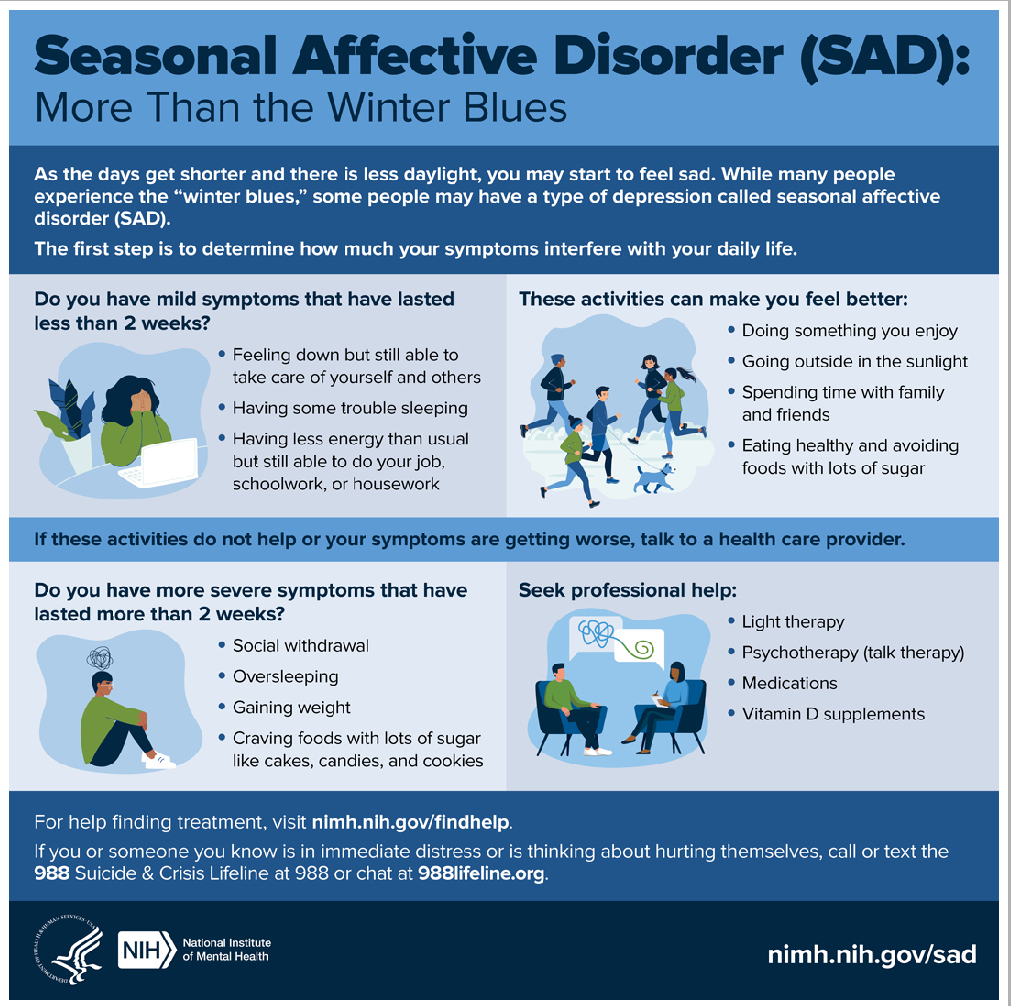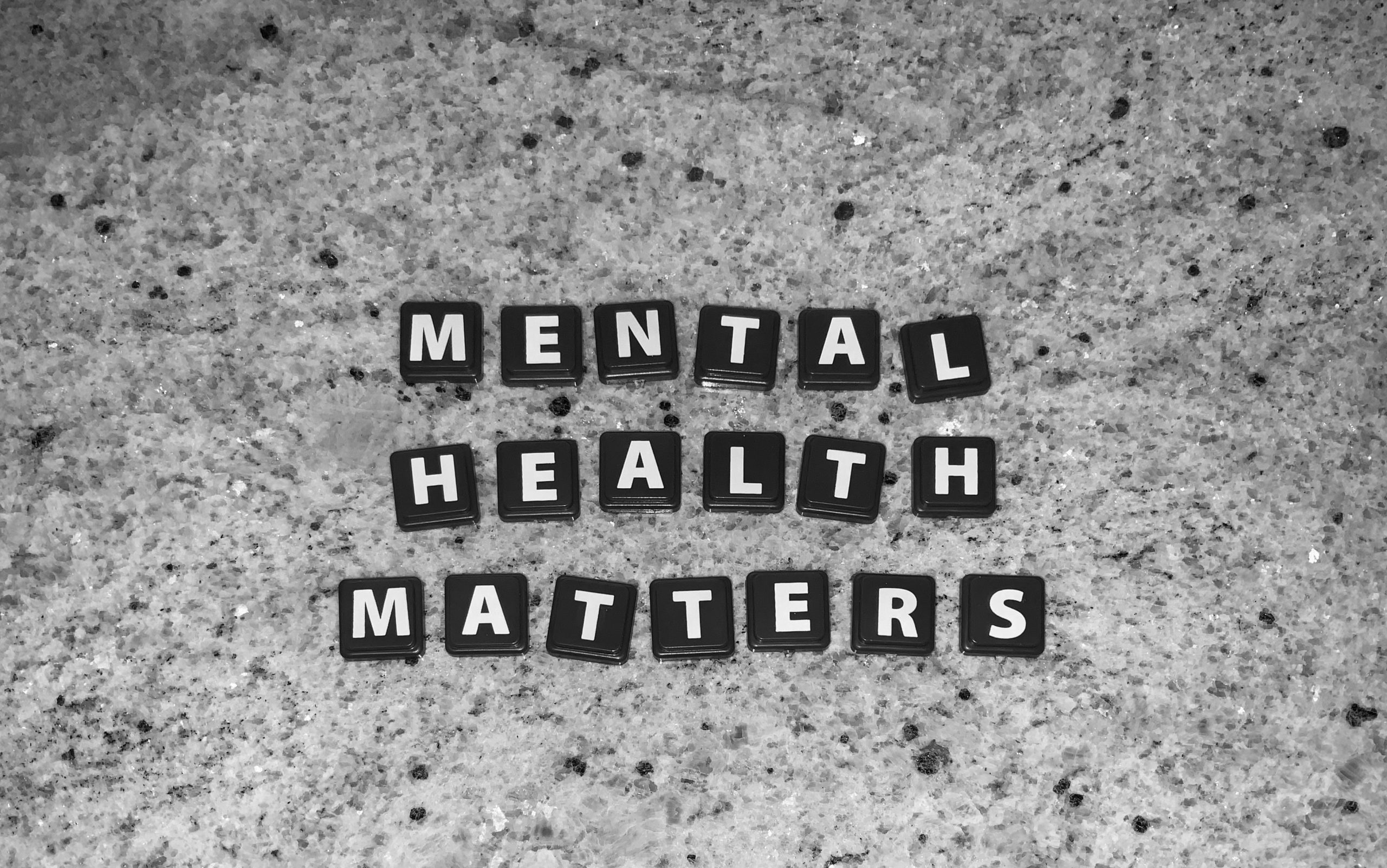If you feel a bit of the winter blues coming on, please know you are not alone. Many people experience an increased sense of loneliness and isolation during this time of year. Most of us feel holiday stress, at the very least, but for many this is not a time of great joy. And while Everyone feels sad or low sometimes, these feelings usually pass with a little time. Depression is different. It stays with us, and can be debilitating. One type of depression known as Seasonal Affective Disorder might be settling in for some folks right around this time.
December is Seasonal Affective Disorder (SAD) Awareness month. SAD is a type of depression that occurs during specific seasons, most commonly in fall and winter. It is characterized by changes in mood and behavior that coincide with seasonal changes. SAD can be winter-pattern or summer-pattern, although summer-pattern is less common.
Symptoms of SAD include persistent sadness, loss of interest in activities, changes in appetite and sleep patterns, low energy, difficulty concentrating, and feelings of hopelessness. It’s important to note that SAD is different from the “holiday blues” and is specifically linked to changes in daylight.
According to the National Instufute of Mental Health. Studies indicate that people with SAD have reduced levels of the brain chemical serotonin, which helps regulate mood. Research also suggests that sunlight helps us maintain normal serotonin levels. Shorter daylight hours may therefore be contributing to decreased serotonin levels in the winter.
Vitamin D deficiency may exacerbate these problems because vitamin D is believed to promote serotonin activity. In addition to vitamin D from food, the body produces vitamin D when exposed to sunlight on the skin. With less daylight in the winter, people with SAD may have lower vitamin D levels, further reducing serotonin activity.
Other studies suggest that both forms of SAD relate to altered levels of melatonin—a hormone important for maintaining the normal sleep−wake cycle. People with winter-pattern SAD produce too much melatonin, which can increase sleepiness and lead to oversleeping.

Light therapy, counseling, medication, Vitamin D supplements and lifestyle changes are just some tools used to manage and alleviate the symptoms of SAD. If you think you or someone you know may be experiencing SAD, it’s important to consult a healthcare professional for an accurate diagnosis and appropriate treatment.
One final note: This can be a difficult season for many people, for many reasons. Please remember to be kind.


















